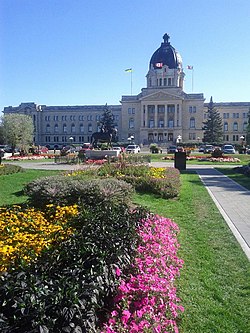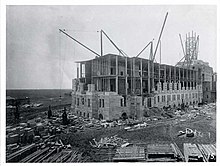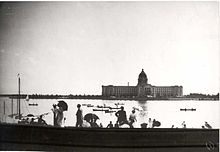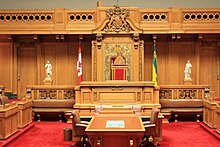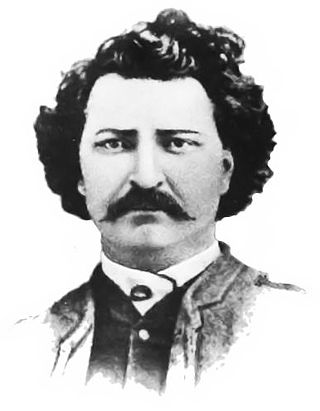
Louis Riel was a Canadian politician, a founder of the province of Manitoba, and a political leader of the Métis people. He led two resistance movements against the Government of Canada and its first prime minister John A. Macdonald. Riel sought to defend Métis rights and identity as the Northwest Territories came progressively under the Canadian sphere of influence.
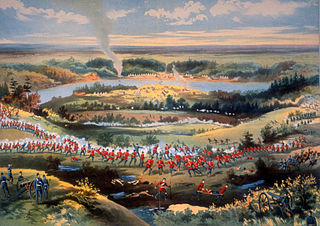
The North-West Rebellion, also known as the North-West Resistance, was an armed resistance movement by the Métis under Louis Riel and an associated uprising by First Nations Cree and Assiniboine of the District of Saskatchewan against the Canadian government. Many Métis felt that Canada was not protecting their rights, their land, and their survival as a distinct people.

Regina is the capital city of the Canadian province of Saskatchewan. The city is the second-largest in the province, after Saskatoon, and is a commercial centre for southern Saskatchewan. As of the 2021 census, Regina had a city population of 226,404, and a Metropolitan Area population of 249,217. It is governed by Regina City Council. The city is surrounded by the Rural Municipality of Sherwood No. 159.

Thomas Walter Scott was the first premier of Saskatchewan from 1905 to 1916. Scott was Saskatchewan's second longest-serving Premier, serving one continuous term from 1905 to 1916). He led the Saskatchewan Liberal Party in three general elections, winning all three with majority governments before retiring. He was the first of six Liberal Premiers to date. He was succeeded by William Melville Martin. Scott was also the minister of various departments during his tenure as premier. Prior to the creation of Saskatchewan in 1905, Scott was a Member of Parliament in the federal House of Commons of Canada, elected in the general elections of 1900 and 1904.

Sir Frederick William Alpin Gordon Haultain was a lawyer and a long-serving Canadian politician and judge. His career in provincial and territorial legislatures stretched into four decades. He served as the first premier of the Northwest Territories from 1897 to 1905 as is recognized as having a significant contribution towards the creation of the provinces of Alberta and Saskatchewan. From 1905 on he served as Leader of the Official Opposition in Saskatchewan as well as Leader of the Provincial Rights Party. His legislative career ended when he was appointed to the judiciary in 1912.

Batoche, Saskatchewan, which lies between Prince Albert and Saskatoon, was the site of the historic Battle of Batoche during the North-West Rebellion of 1885. The battle resulted in the defeat of Louis Riel and his Métis forces by Major General Frederick Middleton and his Northwest Field Force. Batoche was then a small village of some 500 residents. The site has since become depopulated and now has few residents. The 1885 church building and a few other historic buildings have been preserved, and the site is a National Historic Site.
Jean René Allard was a former politician in Manitoba, Canada. He was elected to the Manitoba legislature in 1969 as a New Democrat, but subsequently left to sit as an Independent MLA.
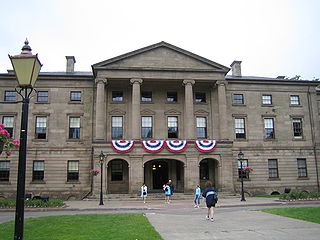
Province House is where the Prince Edward Island Legislature, known as the Legislative Assembly of Prince Edward Island, has met since 1847. The building is located at the intersection of Richmond and Great George Streets in Charlottetown; it is Canada's second-oldest seat of government.
The Métis Nation—Saskatchewan is a federally-recognized government that represents Métis people in the province of Saskatchewan, Canada. It is affiliated with the Métis National Council. Glen McCallum was elected as president in 2017 and reelected in 2021.

The Manitoba Legislative Building, originally named the Manitoba Parliament Building, is the meeting place of the Legislative Assembly of Manitoba, located in central Winnipeg, as well as being the twelfth provincial heritage site of Manitoba. Along with the Legislative Assembly, the building also accommodates the offices for Manitoba's Lieutenant Governor and the Executive Council.

Gordon Leslie Barnhart is a former Clerk of the Senate of Canada and the Saskatchewan Legislature, as well as former Secretary of the University of Saskatchewan. He was the 20th Lieutenant-Governor of Saskatchewan from 2006 until 2012. He was the interim President of the University of Saskatchewan as from May 21, 2014 until October 24, 2015.

The 5th Alberta Legislative Assembly was in session from February 2, 1922, to May 25, 1926, with the membership of the assembly determined by the results of the 1921 Alberta general election held on July 18, 1921. The Legislature officially resumed on February 2, 1922, and continued until the sixth session was prorogued on May 22, 1926 and dissolved on May 25, 1926, prior to the 1926 Alberta general election.

Government House, Regina, Saskatchewan, Canada, was constructed as a residence for the lieutenant governor of the North-West Territories, whose territorial headquarters were in Regina until the provinces of Saskatchewan and Alberta were created out of the Territories in 1905 and Regina became the capital of Saskatchewan.

The Alberta Legislature Building is located in Edmonton and is the meeting place of the Legislative Assembly of Alberta and the Executive Council of Alberta. It is often shortened to "the Ledge".

The Northwest Territories Legislative Building is the home of the Legislative Assembly of the Northwest Territories, in Yellowknife, Northwest Territories. The territory's legislature has used many permanent and temporary facilities throughout its history. The most recent structure was built in 1993 and commenced usage in 1994, being officially opened that year by Canada's monarch, Queen Elizabeth II. Designed by Ferguson Simek Clark/Pin Matthews, in association with Matsuzaki Wright Architects Inc, the building is two stories tall and contains two round halls: the Great Hall and the Caucus Room. The grounds, overlooking Frame Lake, were laid out by Cornelia Oberlander.
John Cullen Nugent (1921-2014) was a Canadian artist and educator known primarily for his public art works, often in the form of abstract sculpture.
Étienne-Joseph Gaboury was a Canadian architect from Winnipeg, Manitoba. He was noted for designing key buildings in his hometown, such as the Royal Canadian Mint building, Esplanade Riel, Saint Boniface Cathedral, and the Precious Blood Church, and was regarded as the province's greatest architect.

Highway 11 is a major north-south highway in Saskatchewan, Canada that connects the province's three largest cities: Regina, Saskatoon and Prince Albert. It is a structural pavement major arterial highway which is approximately 391 kilometres (243 mi) long. It is also known as the Louis Riel Trail (LRT) after the 19th century Métis leader. It runs from Highway 1 in Regina until Highway 2 south of Prince Albert. Historically the southern portion between Regina and Saskatoon was Provincial Highway 11, and followed the Dominion Survey lines on the square, and the northern portion between Saskatoon and Prince Albert was Provincial Highway 12.
The Politics of Saskatchewan relate to the Canadian federal political system, along with the other Canadian provinces. Saskatchewan has a lieutenant-governor, who is the representative of the Crown in right of Saskatchewan; a premier—currently Scott Moe—leading the cabinet; and a legislative assembly. As of the most recent provincial election in 2020, the province is divided into 61 electoral districts, each of which elects a representative to the Legislature, who becomes their member, or MLA. In 2020, Moe's Saskatchewan Party was elected to a majority government. Regina is the provincial capital.
Allan Ray Guy is a Canadian former educator and political figure in Saskatchewan. He represented Athabasca from 1960 to 1975 in the Legislative Assembly of Saskatchewan as a Liberal. After leaving politics in 1975, Guy became principal at Prud'Homme Central School.
